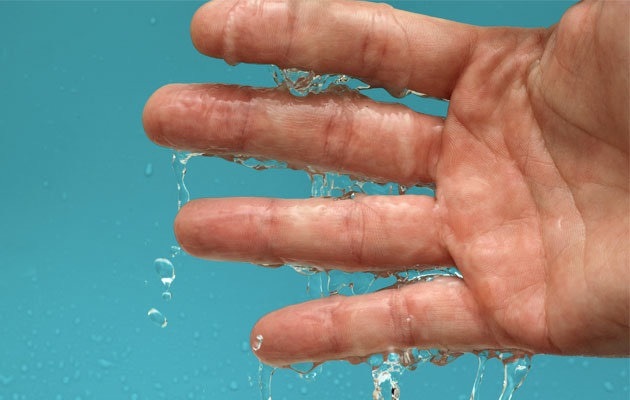Unveiling the Complexities of Excessive Sweating: A Comprehensive Guide to Medical Diagnosis and Management
Excessive sweating, medically known as hyperhidrosis, is a condition that influences a substantial number of people and can have an extensive impact on their quality of life. While sweating is a natural bodily feature, its overactivity in hyperhidrosis offers a special collection of difficulties that typically go beyond mere pain.

Recognizing Hyperhidrosis Causes
Hyperhidrosis triggers can be credited to various factors such as genes, hormone discrepancies, and certain clinical problems. Genetics play a substantial role in primary focal hyperhidrosis, where individuals inherit the problem from their family members. This type of hyperhidrosis commonly shows up in particular areas like the hands, soles of the feet, underarms, and face. Hormonal inequalities, particularly an over active thyroid gland or menopausal modifications, can likewise set off excessive sweating. Additionally, particular medical problems such as diabetic issues, heart disease, and infections can bring about additional generalized hyperhidrosis. These underlying wellness issues can interfere with the body's natural air conditioning system, triggering the sweat glands to end up being overactive. Recognizing the source of hyperhidrosis is vital in diagnosing and properly managing this problem. By identifying the certain factors adding to excessive sweating, health care companies can customize treatment strategies to address the underlying cause, supplying relief and enhancing the quality of life for individuals influenced by hyperhidrosis.
Acknowledging Hyperhidrosis Manifestations

Furthermore, hyperhidrosis symptoms might materialize in social and emotional distress, as people may really feel self-conscious or nervous about their sweating, causing evasion of social circumstances (Treatment for hyperhydrosis of hands). Furthermore, duplicated episodes of extreme sweating can result in skin maceration, fungal infections, and a total reduction in self-esteem
Diagnostic Refine for Hyperhidrosis
Initiating the analysis process for too much sweating includes thorough examination of the individual's clinical history and physical exam. Asking about the beginning, period, and sets off of sweating episodes is critical to distinguish in between key focal hyperhidrosis and additional generalised hyperhidrosis. Case history must also consist of questions regarding medications, medical problems, and family background of hyperhidrosis.
Throughout the checkup, certain attention is paid to the areas influenced by sweating. The doctor may evaluate the level of sweating, look for signs of underlying conditions, and review the impact of sweating on the individual's high quality of life. In addition, certain tests like the gravimetric examination, starch-iodine examination, or skin conductance dimensions may be conducted to measure the quantity of sweat generated.
In addition, in instances where second hyperhidrosis is suspected, additional examinations such as blood examinations, pee examinations, and imaging research studies might be suggested to determine the pop over to this site underlying cause of extreme sweating. The diagnostic process intends to properly establish the kind and source of hyperhidrosis to assist suitable management strategies.
Therapy Alternatives for Hyperhidrosis
When resolving extreme sweating, different treatment options are readily available to relieve signs and symptoms and enhance the individual's lifestyle. The therapy strategy for hyperhidrosis depends upon the seriousness of symptoms and the person's action to preliminary therapies.
Topical treatments, such as aluminum-based antiperspirants, are often advised as the first line of protection for managing moderate cases of hyperhidrosis. For individuals with extra serious signs and symptoms, oral drugs like anticholinergics may be recommended to aid reduce sweating.

Effective Administration Methods
To successfully handle hyperhidrosis, a personalized and comprehensive treatment strategy customized to the individual's particular demands and response to previous treatments is crucial. This like it strategy might incorporate a mix of restorative strategies, including lifestyle modifications, topical therapies, oral medicines, botulinum contaminant shots, iontophoresis, and in severe cases, surgical treatments like gland elimination or sympathectomy. Way of living alterations such as using moisture-wicking garments, making use of antiperspirants, and practicing stress-reducing techniques can match clinical interventions. Topical antiperspirants having light weight aluminum chloride are commonly the first-line treatment, with stronger solutions offered for resistant instances. Oral medicines like anticholinergics might be suggested for generalised hyperhidrosis. Botulinum contaminant injections are reliable for focal hyperhidrosis, offering short-term relief by obstructing the release of acetylcholine. Iontophoresis, involving making use of a low electrical current to lower gland activity, can be useful for both palmoplantar and axillary hyperhidrosis. Surgical choices are usually reserved for extreme, refractory situations and require careful factor to consider of risks and advantages. A multidisciplinary technique involving skin specialists, medical care physicians, and, if necessary, surgeons, can optimize the administration of hyperhidrosis.
Conclusion
In conclusion, hyperhidrosis is a condition characterized by excessive sweating, which can considerably influence a person's top quality of life. With appropriate medical diagnosis and administration methods, people suffering from hyperhidrosis can discover relief and improve their total health.
Extreme sweating, medically recognized as hyperhidrosis, is a condition that affects a considerable number of people and can have a profound influence on their top quality of life. By determining the specific factors adding to extreme sweating, medical care service providers can tailor treatment plans to address the underlying cause, using alleviation and improving the quality of life for people impacted by hyperhidrosis.
Hyperhidrosis, characterized by too much sweating beyond what is necessary for regulating body temperature level, can substantially impact an individual's top quality of life. Making inquiries concerning the start, duration, and sets off of sweating episodes is essential to set apart between key focal hyperhidrosis and additional generalized hyperhidrosis. Treatment for hyperhydrosis of hands.In verdict, hyperhidrosis is a condition identified by excessive sweating, which can considerably influence an individual's quality of life